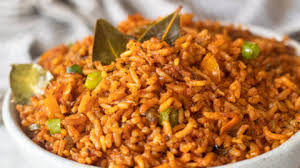Food, they say, is life. One cannot live or survive without it. It is a basic necessity that all human beings need for everyday energy and strength. Some even argue that we need food more than we need water, underscoring its critical importance. Among the myriad of dishes enjoyed worldwide, Jollof rice stands out, particularly in West Africa.


The Origin of Jollof Rice
Jollof rice is a popular West African dish that originated in the Wolof Empire, now present-day Senegal and The Gambia. While some believe it originated in Ghana or Nigeria, its Wolof roots are widely acknowledged. Despite its widespread popularity, many people find it challenging to prepare.
Ingredients and Preparation
Jollof rice is typically made with rice, tomatoes, onions, peppers, spices, and sometimes meat or fish. These ingredients are cooked together in a single pot, infusing the dish with a sweet flavor and rich aroma. Notably, Nigerians are known for their preference for a spicier version of Jollof rice.
Cultural Significance
Jollof rice holds significant cultural importance in West Africa. It is often served to guests as a sign of respect and welcome and is a staple at many ceremonies. Personally, I always prefer to have Jollof rice at any party I attend, and I believe that party Jollof tastes better than homemade versions.
Variations and Trends
Jollof rice varies across regions, each with unique names and ingredients. For example, in Mali, it is known as “Zaamè,” while in Senegal, it is called “ceebu jën” or “benachin.” In Ghana, Jollof rice can be cooked with palm oil and served with chicken or fish alongside a side of spicy pepper sauce. Remarkably, Jollof rice can be stored for up to three months without spoiling.

Nowadays, people have developed various modern twists on traditional Jollof rice. Some shape cooked Jollof rice into patties and fry them until crispy. Others use plant-based protein sources and gluten-free ingredients. Despite these variations, Jollof rice remains a beloved and staple food across West Africa.
The Great Jollof Debate
A common debate persists over which country makes the best Jollof rice: Ghana or Nigeria. This friendly rivalry adds to the rich cultural tapestry of Jollof rice, making it not just a meal but a symbol of cultural pride and heritage.
Conclusion
Jollof rice is more than just a dish; it is a culinary journey through West African history, tradition, and modern innovation. Its rich flavors, cultural significance, and regional variations make it a beloved dish for many. Whether enjoyed at a festive gathering or as a comforting homemade meal, Jollof rice continues to unite and delight people across the globe.
Credits
Written by Ahmed Aisha Temitope
Chief Editor – Ugwuamadi Collins
